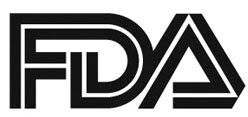FDA Advisory Committee Votes in Favor of Ramucirumab/Erlotinib in EGFR+ Metastatic NSCLC
The FDA Oncologic Drugs Advisory Committee agreed that ramucirumab plus erlotinib showed a favorable benefit/risk profile in patients with untreated metastatic EGFR-positive non–small cell lung cancer in the phase III RELAY study. The vote was 6 to 5 in favor of the combination and ODAC has scheduled a hearing to discuss the terms of the Biologic License Application.<br />

The FDA Oncologic Drugs Advisory Committee (ODAC) agreed that ramucirumab (Cyramza) plus erlotinib (Tarceva) showed a favorable benefit/risk profile in patients with untreated metastaticEGFR-positive nonsmall cell lung cancer (NSCLC) in the phase III RELAY study. The vote was 6 to 5 in favor of the combination and ODAC has scheduled a hearing to discuss the terms of the Biologic License Application.1
In the RELAY trial, the combination of ramucirumab and erlotinib significantly improved progression-free survival (PFS) compared with placebo plus erlotinib in patients with untreatedEGFR-mutated metastatic NSCLC. The results were published in TheLancet Oncology.2
At a median follow-up of 20.7 months (range, 15.8-27.2), ramucirumab plus erlotinib demonstrated a PFS of 19.4 months (95% CI, 15.4-21.6) compared with placebo plus erlotinib, which resulted in a 12.4-month median PFS (95% CI, 11.0-13.5), which represented at 41% reduction in the risk of disease progression or death (HR, 0.59; 95% CI, 0.46-0.76;P<.0001). The overall survival (OS) data were not yet mature at the time of data cutoff.2
Treatment-emergent adverse events (TEAEs) were observed in 72% of patients treated with ramucirumab plus erlotinib (159 out of 221) and 54% of patients in the placebo group (121 out of 225). The most common grade 3/4 TEAEs observed with the combination were hypertension (24%) and dermatitis acneiform (15%). In the placebo arm, the most common grade 3/4 TEAEs were dermatitis acneiform (9%) and increased alanine aminotransferase (8%). Serious TEAEs occurred in 29% of patients who received ramucirumab plus erlotinib (n = 65), and in 21% of patients who received placebo (n = 47). The most common serious TEAEs observed with the combination treatment were pneumonia (3%), cellulitis (2%), and pneumothorax (2%). The most common serious TEAEs of any grade seen with placebo plus erlotinib were pyrexia (2%) and pneumothorax (1%). There was 1 treatment-related death in the combination arm, which was caused by hemothorax after a thoracic drainage procedure for pleural empyema.
“Given the unmet need that remains in treating metastaticEGFR-mutated nonsmall cell lung cancer, we are encouraged that the majority of these experts agree Cyramza plus erlotinib has a favorable benefit/risk profile for the first-line treatment of these patients,” Maura Dickler, MD, vice president of late-phase development, Lilly Oncology, said in a statement. “We believe in the clinical meaningfulness of the data from the RELAY trial, which targeted the VEGFR and EGFR pathways together. We look forward to continuing to work with the FDA on this application to offer a new front-line treatment option for people with metastaticEGFR-mutated non­small cell lung cancer.”
RELAY was a multicenter, randomized, double-blind study conducted in 13 countries. Randomization was 1:1 and overall, 224 patients were included in the combination arm and 225 were included in the monotherapy arm. Patients received either oral erlotinib (150 mg/day) plus either intravenous ramucirumab (10 mg/kg) or a matching dosage of placebo once every 2 weeks. Randomization was stratified by gender, geographical location,EGFR-mutation type, and theEGFRtesting method.
The primary end point of the study was investigator-assessed PFS in the intent-to-treat population. All patients who received at least 1 dose of treatment during the study were also evaluated for safety. The coprimary end point was the number of participants with 1 or more drug-related adverse events (AE). The secondary end points of the study were OS, objective response rate, disease control rate, duration of response, pharmacokinetics, the number of participants with anti-ramucirumab antibodies, the change from baseline on the Lung Cancer Symptom Scale, and the change from baseline on the European quality of life 5-dimension, 5-level questionnaire.
The RELAY study authors led by Kazuhiko Nakagawa, MD, concluded from RELAY that ramucirumab plus erlotinib was superior to placebo plus erlotinib in terms of PFS for the first-line treatment of patients withEGFR-mutated NSCLC. They also found that the safety profile of the combination was consistent with the profiles of either drug alone and determined that the combination was a safe initial treatment for this patient population.
ODAC will provide the FDA with its independent opinion and recommendation as the regulatory body considers approving the combination of ramucirumab and erlotinib inEGFR-positive NSCLC. Regulatory applications for ramucirumab/erlotinib have also been submitted outside of the United States in regions like Europe and Japan.1
References
- FDA advisory committee votes in favor of Lilly’s Cyramza (ramucirumab) as first-line treatment for metastaticEGFR-mutated non-small cell lung cancer [news release]. Indianapolis, Indiana: Eli Lily and Company; February 26, 2020.https://bit.ly/2wKanSz. Accessed February 27, 2020.
- Nakagawa K, Garon E, Seto T, et al. Ramucirumab plus erlotinib in patients with untreated,EGFR-mutated, advanced non-small-cell lung cancer (RELAY): a randomised, double-blind, placebo-controlled, phase 3 trial.Lancet Oncol. 2019;20(12):1655-1669. doi: https://doi.org/10.1016/ S1470-2045(19)30634-5.
Kim Evaluates New Regimens for EGFR+ Lung Cancer
January 20th 2025During a Community Case Forum event in partnership with the Medical Oncology Association of Southern California, Edward S. Kim, MD, MBA, discussed the FLAURA2 and MARIPOSA trials of newer regimens for EGFR-positive lung cancer.
Read More
Amivantamab/Lazertinib Maintains OS Benefit in EGFR+ NSCLC
January 15th 2025During a Case-Based Roundtable® event, Joshua K. Sabari, MD, continued discussion of key outcomes from the MARIPOSA trial and toxicity management in patients with EGFR-mutated non–small cell lung cancer in the second article of a 2-part series.
Read More